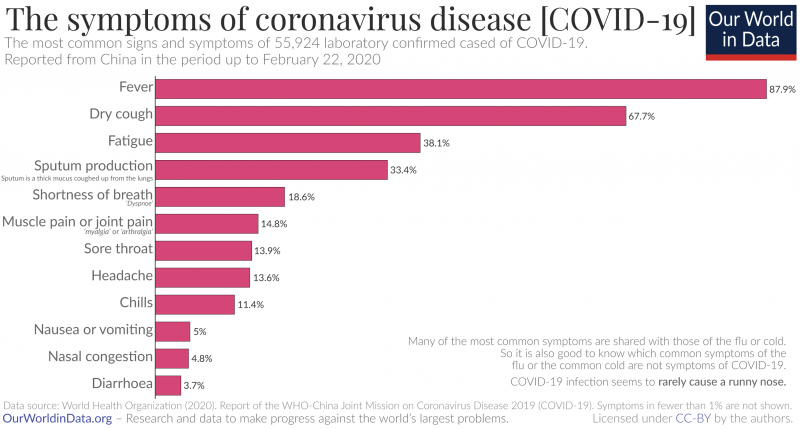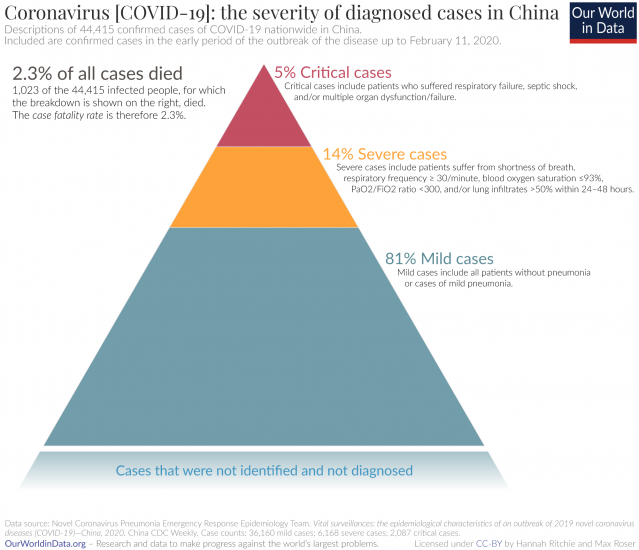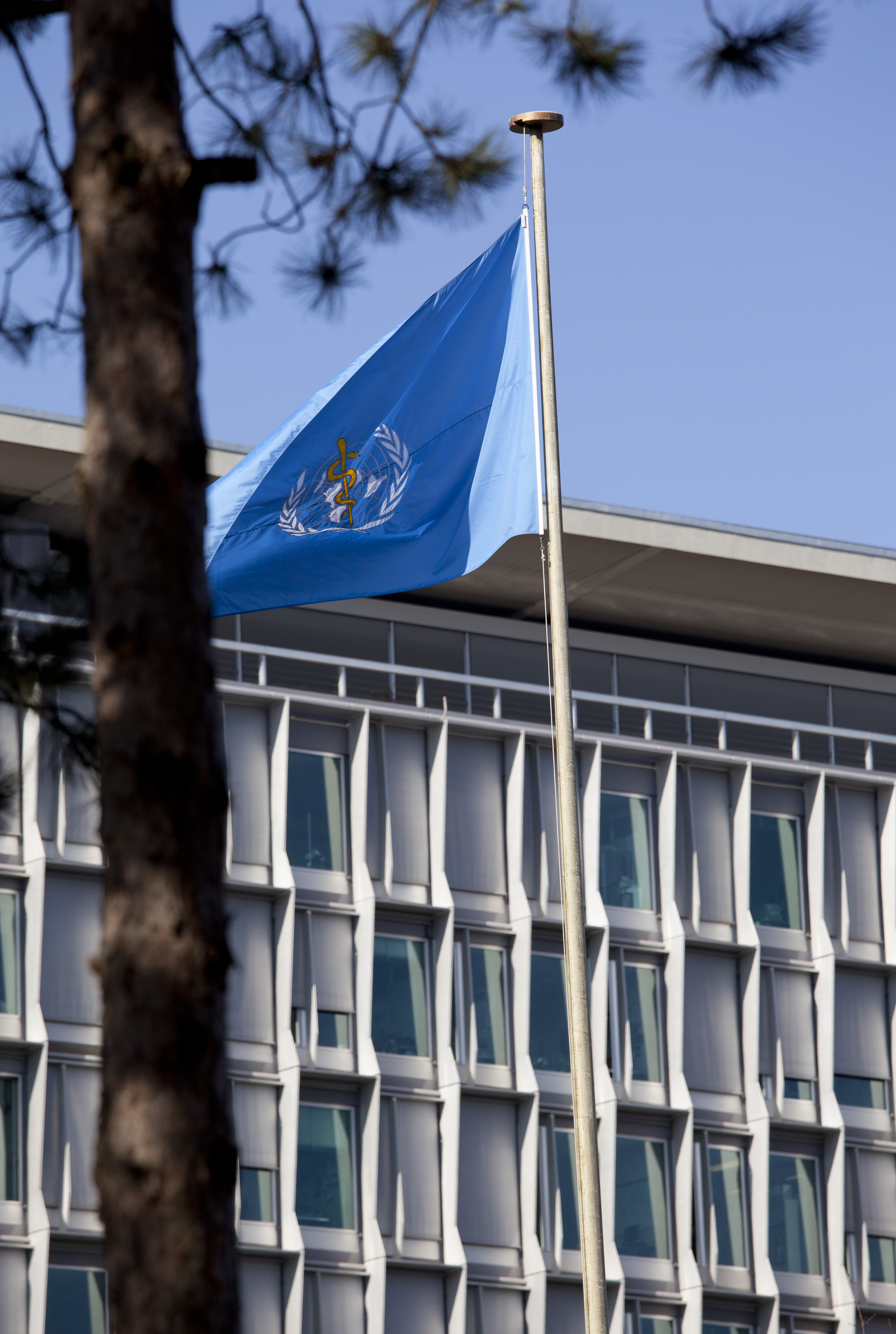
VOX has done its readers a favor by listing reference material that provides the most up-to-date data regarding the spread of the coronavirus COV-19 pandemic in the USA and around the world.
On March 14, 2020, Roge Karma and Ezra Klein of VOX penned the following report, “A coronavirus reading guide for the perplexed, the anxious, and the obsessive”
9 questions about the Covid-19 coronavirus outbreak, answered, Vox
“What is the coronavirus? What can I do to prevent getting it? What should I do if I think I have it? When will the outbreak end? This piece answers all of these questions and more, so if you’re short on time, start here.”

9 charts that explain the coronavirus pandemic, Vox
“For visual learners. This chart is particularly telling, and scary. As you’ll see in pieces throughout this guide, America’s failure to test aggressively enough and early enough has set the stage for a much more dangerous epidemic than was necessary:”
:no_upscale()/cdn.vox-cdn.com/uploads/chorus_asset/file/19786951/covid_19_testing_per_capita.jpg)
Coronavirus 101: Symptoms, spread, and severity
Naming the coronavirus disease (Covid-19) and the virus that causes it, WHO
“You’ve probably heard a lot of different names for this new virus thrown around: “coronavirus,” “Covid-19,” maybe even “SARS-CoV-2.” This short post explains the subtle but important differences between these designations.”
How Deadly Is Coronavirus? What We Know and What We Don’t, New York Times
“This piece does a great job of breaking down how case fatality rate (CFR) is calculated, why the number is often inflated (and sometimes deflated) at the outbreak of a new disease, and where epidemiologists generally agree the actual CFR for Covid-19 stands (closer to 1 percent).”

Coronavirus Disease (COVID-19) overview, Our World in Data
“Visualizes the latest research and data on coronavirus total cases, growth rate, severity, symptoms, fatality risk, and more. OWD’s custom charts and graphs make the huge swaths of data easily accessible.”
Visual: Johns Hopkins Covid-19 interactive map
“This interactive map from Johns Hopkins gives up-to-date counts of total confirmed Covid-19 coronavirus cases worldwide, country-by-country breakdowns, and death and recovery rates.”
How does the new coronavirus spread? These new studies offer clues. Vox
“This piece looks at recent research on how the coronavirus spreads from person to person. Studies show that the virus transmits primarily via droplets from coughing or sneezing and can spread even when people don’t have any symptoms or are just beginning to feel sick.”

Report: The WHO-China Joint Mission on Coronavirus Disease 2019, World Health Organization
“This report is important for a variety of reasons. One is that it established the widely referenced baseline for Covid-19 symptoms. Based on 55,924 confirmed cases in China, the WHO established the two most common symptoms of those infected as a fever (88 percent) and a dry cough (67.7 percent). Less frequent symptoms include sputum, or thick mucus from coughs (33.4 percent), shortness of breath (18.6 percent), sore throat (13.9 percent), and headache (13.6 percent).”
Study: On the origin and continuing evolution of SARS-CoV-2, National Science Review
“This study performed population genetic analyses of SARS-CoV-2 genomes, finding 2 distinct strains of the virus. The first — a more aggressive and severe strain called the “L type” — was prevalent in the initial outbreak in China but has since decreased in frequency. The second, a more mild strain called the “S type,” was less prevalent in the early outbreak but has increased in relative frequency since. The existence of these 2 separate strains could potentially explain potential discrepancies in reported symptoms and case fatality rates between China and other countries.”
:no_upscale()/cdn.vox-cdn.com/uploads/chorus_asset/file/19788825/estimate_case_fatality_hubei_age.jpg)
Study: Children at similar risk of infection and transmission as general population, Cold Spring Harbor Laboratory
“Preliminary data seemed to indicate that children were being infected by coronavirus at far lower rates than adults. However, this study in China of 391 cases and 1,286 of their close contacts concludes that “children are at similar risk of infection as the general population, though less likely to have severe symptoms.” Put another way, children may be experiencing less severe symptoms of the coronavirus, but they’re still likely to be carriers and thus may act as asymptomatic transmitters.”
What you can do
Preparing for Coronavirus to Strike the US, Scientific American
“We should prepare, not because we may feel personally at risk,” writes Zeynep Tufekci, “but so that we can help lessen the risk for everyone. We should prepare not because we are facing a doomsday scenario out of our control, but because we can alter every aspect of this risk we face as a society.”
“This piece makes the case that the effort to “flatten the curve” through behavior changes such as social distancing is a moral and civic duty as well as a personal decision.”

CDC guidelines on what to do if you’re sick, Centers for Disease Control and Prevention
“If you have a confirmed case of the Covid-19 coronavirus disease but don’t need immediate medical attention, health professionals suggest self-isolation. According to the CDC, this self-isolation should include staying at home (except to get medical care), separating yourself from other people (and pets) in your home, cleaning all “high-touch” surfaces, and washing one’s hands often. This guide also includes a list of precautions for household members/partners/caregivers of infected individuals.”
Six things you can do now to get ready for an outbreak, Vox
“This outlines the 6 key steps that all of us should take to not only prevent ourselves from getting sick but prepare our lives for what’s to come (and in many ways is already happening). It includes information on how to best wash your hands, whether or not to buy a face mask, and the importance of psychological preparation in the face of a pandemic.”
:no_upscale()/cdn.vox-cdn.com/uploads/chorus_asset/file/19751074/Viruses_with_corona_update_covid.jpg)
Coronavirus: Why you must act now, Medium
“This piece does a nice job outlining the critical role of time in the coronavirus response: We’re living in an exponential curve right now, and the difference of a few days can be the dividing line between a successful policy and an uncontrolled outbreak.”
“This 2018 meta-analysis looked at 15 studies of how the practice of workplace social distancing (e.g., increased use of telecommuting and remote-meeting options, staggered work hours, and spacing workers farther apart) impacted the spread of the H1N1 flu in 2009. The authors found that workplace social distancing measures alone “produced a median reduction of 23% in the cumulative influenza attack rate in the general population” (in addition to delaying and reducing the peak influenza attack rate). This outbreak occurred under different circumstances than the Covid-19 outbreak, but the general lesson is clear: Social distancing works.”
How canceled events and self-quarantines save lives, in one chart, Vox
:no_upscale()/cdn.vox-cdn.com/uploads/chorus_asset/file/19799514/Screen_Shot_2020_03_13_at_1.46.24_PM.png)
“The primary factor that will determine the severity of the coronavirus’s impact is the speed at which the outbreak occurs. The phrase “flatten the curve” has become a popular way to describe the importance of how we as a society can change our collective behavior to slow the rate of coronavirus cases and prevent our health care system from being overwhelmed. This piece explains the term itself, the chart behind it, and why it’s so important prevent an overwhelming burden on our health care system.”
Study: Therapeutic and triage strategies for 2019 novel coronavirus disease in fever clinics, The Lancet
“This study outlines best practice strategies for diagnosing and treating Covid-19 from the point of view of hospitals and clinics, but can also be helpful for individuals experiencing symptoms. The 2 highest-concern symptoms are “dyspnea” (the feeling of shortness of breath) and “hypoxia” (having a low level of oxygen in your blood). The study notes that patients presenting with these symptoms should be immediately sent into isolation (and receive requisite medical care); whereas for those exhibiting other symptoms, additional testing is needed to determine whether the patient has contracted Covid-19.”
/cdn.vox-cdn.com/uploads/chorus_image/image/66489466/GettyImages_1206552565.0.jpg)
The global response to coronavirus
How does the coronavirus outbreak end?, Vox
“Following the initial outbreak of coronavirus in China, the experts agreed the way to end the outbreak was simple: containment. Now, with cases continuing to spread throughout the world, scientists think the containment scenario is unlikely. This piece gives an overview of various scenarios for how the outbreak could end, ranging from “nightmare” to “lucky.” One important takeaway is that the severity of Covid-19’s impact on our societies is a direct function of how we collectively choose to respond to it.”
The most important lessons from China’s Covid-19 response, Vox
“This interview with Bruce Aylward, WHO’s assistant director general who led the organization’s mission to China, explores the big takeaways from the mission’s report. Alyward and Vox’s Julia Belluz discuss the playbook China used to curb Covid-19 spread, why response speed to an outbreak is so crucial, whether China’s coronavirus data can be trusted.”
:no_upscale()/cdn.vox-cdn.com/uploads/chorus_asset/file/19769372/Screen_Shot_2020_03_05_at_8.49.26_AM.png)
What America can learn from Taiwan’s coronavirus response, Vox
“Taiwan is an island of 23 million just 81 miles from mainland China and had 2.7 million visitors from China last year. Yet, as of 3/10/2020, the country had just 45 Covid-19 cases, and only 1 death, making Taiwan’s one of the most effective containment strategies in the world so far. This interview with Stanford health policy researcher Jason Wang explores what Taiwan did right, and how other countries, could put those lessons to use.”
They’ve Contained the Coronavirus. Here’s How., NY Times
“Taiwan isn’t the only place to stave off a massive Covid-19 outbreak. As of March 12, Hong Kong had only 131 confirmed cases of coronavirus, including 4 deaths. Singapore is even more impressive. It has managed to limit its coronavirus outbreak to 187 cases confirmed and no deaths — all without closing public schools. How did they do it? 2 epidemiologists from the University of Hong Kong explain.”
Excellent information.
LikeLiked by 1 person